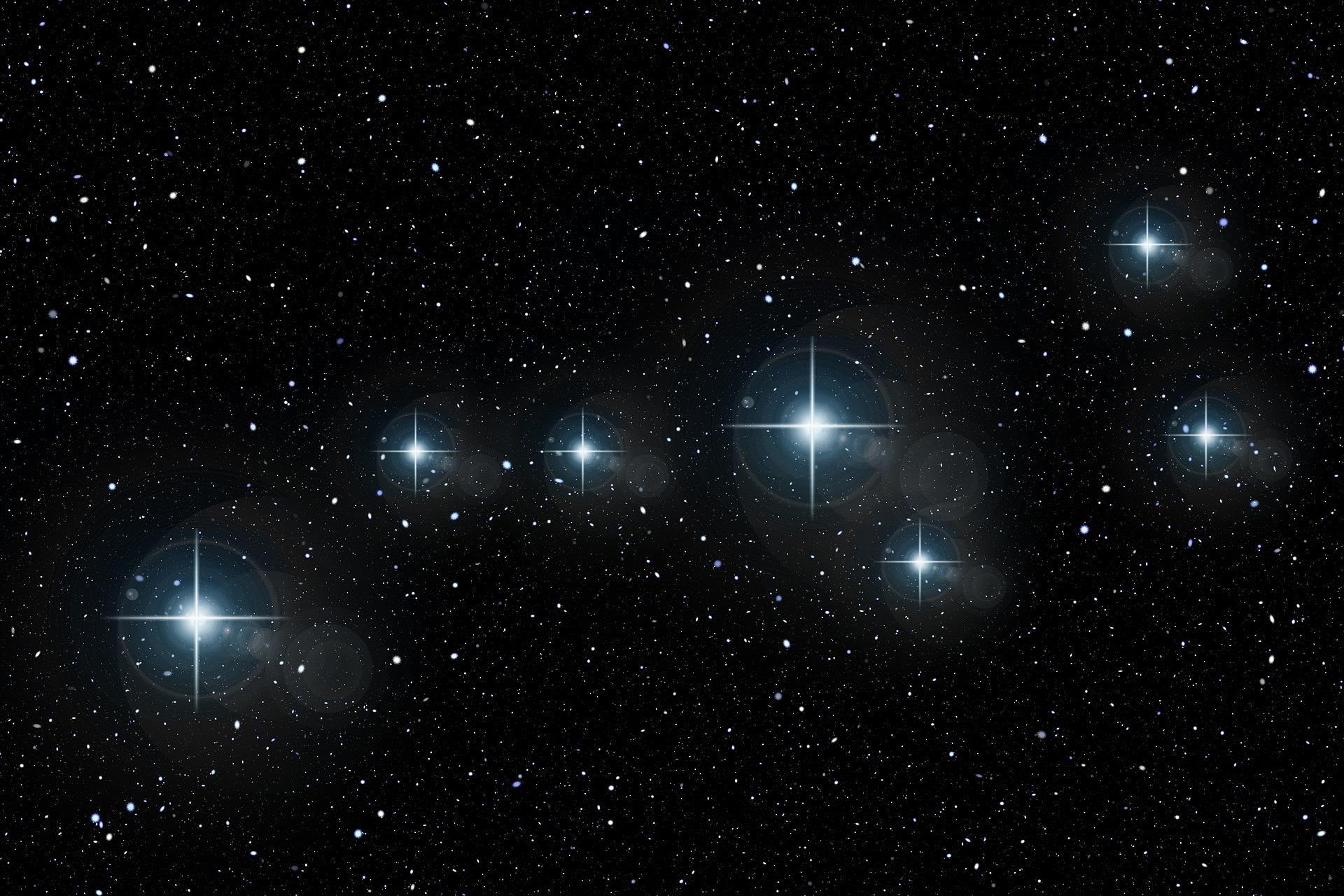Constellation Creation
- Lesson Plan
- Video
- Feedback Form
Constellations are fun to identify in the night sky, have helped humans navigate and chart the seasons for thousands of years, and are the stuff of great legends and myths. But what can these patterns really tell us about stars? Students create constellation models as a team to find out.
SEED Standard 4.4.1
Construct an explanation that differences in the apparent brightness of the Sun compared to other stars is due to the relative distance (scale) of stars from Earth.
SEED Standard 6.1.3
Use computational thinking to analyze data and determine the scale and properties of objects in the solar system.
Materials
7 copies of Orion and Big Dipper sheet in color, cut in half
12 blue stars, 1 Betelgeuse, 1 Mizar prints in color
Cardboard or poster board
Glue
Scissors or razor blade
Popsicle sticks
Extra copies of the Orion and Big Dipper sheet for your Earth observers
Do Ahead
• You want to have 7 stars for each constellation that students can hold. Cut out 6 blue stars and one Betelgeuse for Orion, glue onto board, glue Orion constellation on back, attach popsicle stick for holding.
• Cut out 6 blue stars and 1 Mizar for the Big Dipper, glue onto board, glue Big Dipper on back, attach popsicle stick for holding.
• The information on the back of Orion and Big Dipper Sheet is for your use. It can be handed out to older/ more advanced students.
• Choose a space to do the activity. Outside, in a MPR, or other large room will work. Ideally you will have 30-50 feet of space.
• Decide how you want to introduce constellations to your class. You can use stories or discussion or both.
Explanation
Constellations are useful for astronomers, both professional and amateur, to navigate their way around the sky. Constellations have allowed humans to chart the sky into visible patterns of stars for thousands of years. Most cultures have created fascinating constellation myths and stories. But of course, constellations aren’t ‘real’. They are arbitrary and a product of the human brain. They are patterns that can only be seen from Earth. Students can learn about perspective and make some interesting observations about stars through modeling two commonly known constellations, the Big Dipper and Orion.
Directions can be downloaded on the GBO printable version below.
| Attachment | Size |
|---|---|
| 324.82 KB | |
| 462.44 KB | |
| 230.47 KB | |
| 5.17 MB |

